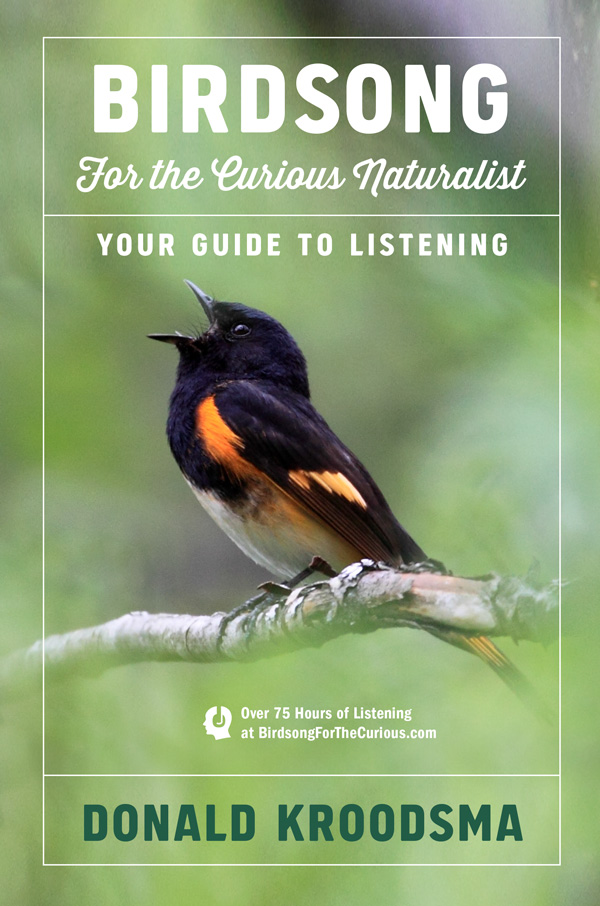37. How phoebes use their two to three songs.
6. Song Learning Often Creates Complex Songs and Large Repertoires
Small to large repertoires
From page 85 in the book.
How phoebes use their two to three songs. Merely identifying the two songs of the black phoebe, the two of the eastern phoebe, and the three of the Say's phoebe is not enough, of course. Once you have identified the songs, it's inevitable that you will ask yourself how they are used in a performance. After you have explored the next section, "How a Repertoire Is Delivered," chances are good that you will want to come back to these phoebes, or at least think about how the songs are being used whenever you encounter one in nature. For the eastern phoebe, you will probably hear that the faster he sings the more likely he is to alternate his two song forms. You can check that: Collect some numbers from time to time on singing rates and how he uses his two song forms, to see what your eastern phoebes do. Only the Say's phoebe has a special song used at dawn. How does he work that into the sequences of the other two songs? Does the black phoebe ever sing strings of one song, followed by just a single example of the second, like the eastern phoebe? Phoebes, even with their limited repertoire of songs, can captivate the listening ear.
Other flycatchers mentioned elsewhere in this book also have limited song repertoires: the alder flycatcher (p. 45) and least flycatcher (p. 79) have just one song apiece, the western wood-pewee (p. 148) and eastern phoebe (p. 46) two songs, the eastern wood-pewee (p. 148) and willow flycatcher (p. 45) three songs apiece. Many of the close relatives of the alder and willow flycatchers in the genus Empidonax have just two to three songs apiece (p. 151).
